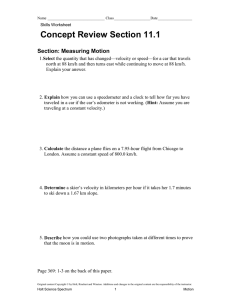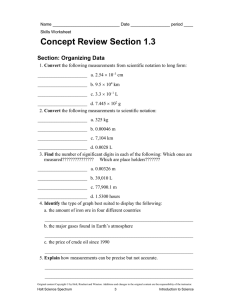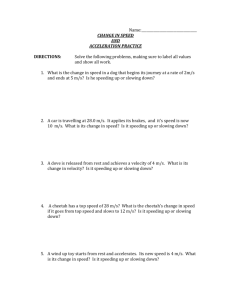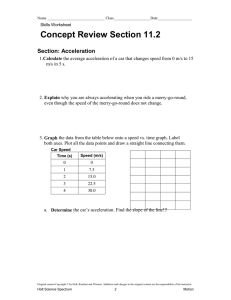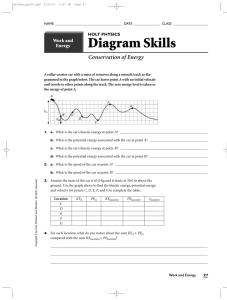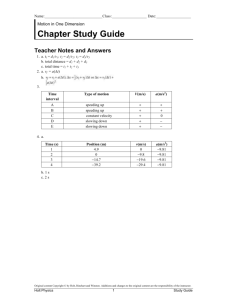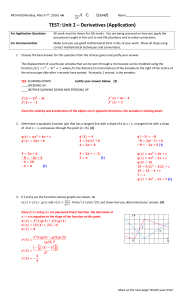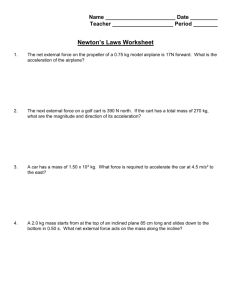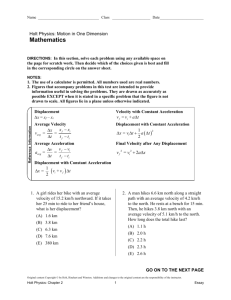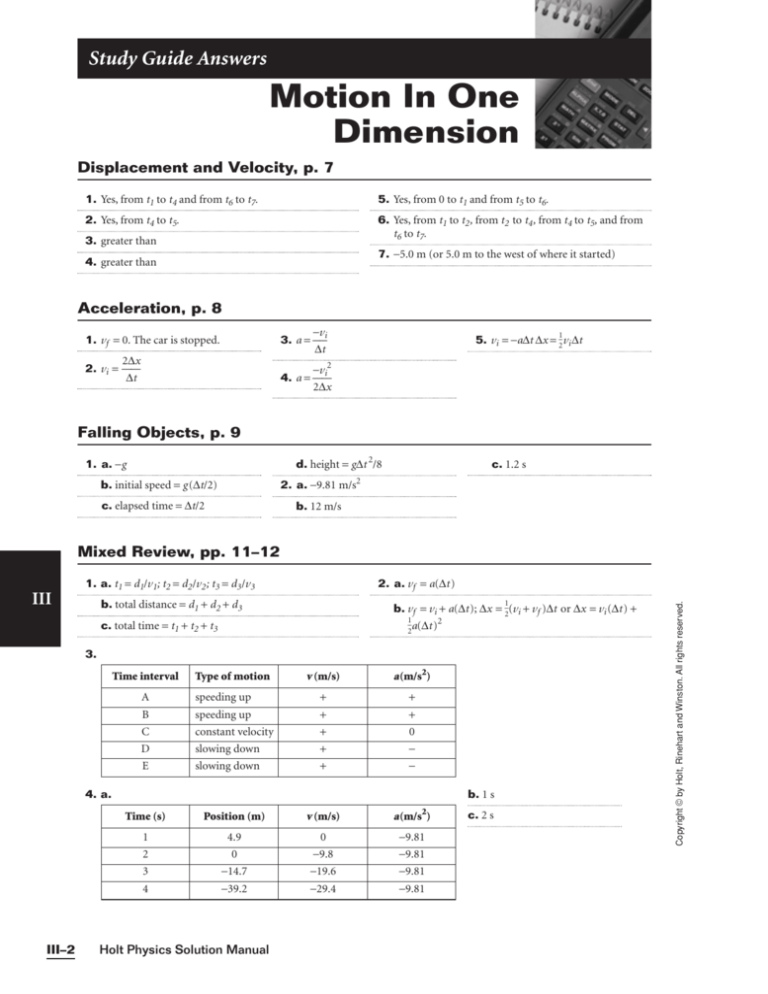
Study Guide Answers
Motion In One
Dimension
Displacement and Velocity, p. 7
1. Yes, from t1 to t4 and from t6 to t7.
5. Yes, from 0 to t1 and from t5 to t6.
2. Yes, from t4 to t5.
6. Yes, from t1 to t2 , from t2 to t4 , from t4 to t5, and from
t6 to t7.
3. greater than
7. −5.0 m (or 5.0 m to the west of where it started)
4. greater than
Acceleration, p. 8
−v
3. a = i
∆t
1. vf = 0. The car is stopped.
2∆x
2. vi =
∆t
1
5. vi = −a∆t ∆x = 2 vi ∆t
−vi2
4. a =
2∆x
Falling Objects, p. 9
1. a. −g
d. height = g∆t 2/8
b. initial speed = g(∆t/2)
c. 1.2 s
2
2. a. −9.81 m/s
c. elapsed time = ∆t/2
b. 12 m/s
Mixed Review, pp. 11–12
2. a. vf = a(∆t)
b. total distance = d1 + d2 + d3
1
b. vf = vi + a(∆t); ∆x = 2(vi + vf )∆t or ∆x = vi (∆t) +
1
a(∆t)2
2
c. total time = t1 + t2 + t3
3.
Time interval
Type of motion
v (m/s)
a(m/s2)
A
B
C
D
E
speeding up
speeding up
constant velocity
slowing down
slowing down
+
+
+
+
+
+
+
0
−
−
4. a.
III–2
b. 1 s
2
Time (s)
Position (m)
v (m/s)
a(m/s )
1
2
3
4
4.9
0
−14.7
−39.2
0
−9.8
−19.6
−29.4
−9.81
−9.81
−9.81
−9.81
Holt Physics Solution Manual
c. 2 s
Copyright © by Holt, Rinehart and Winston. All rights reserved.
III
1. a. t1 = d1/v1; t2 = d2 /v2 ; t3 = d3 /v3

